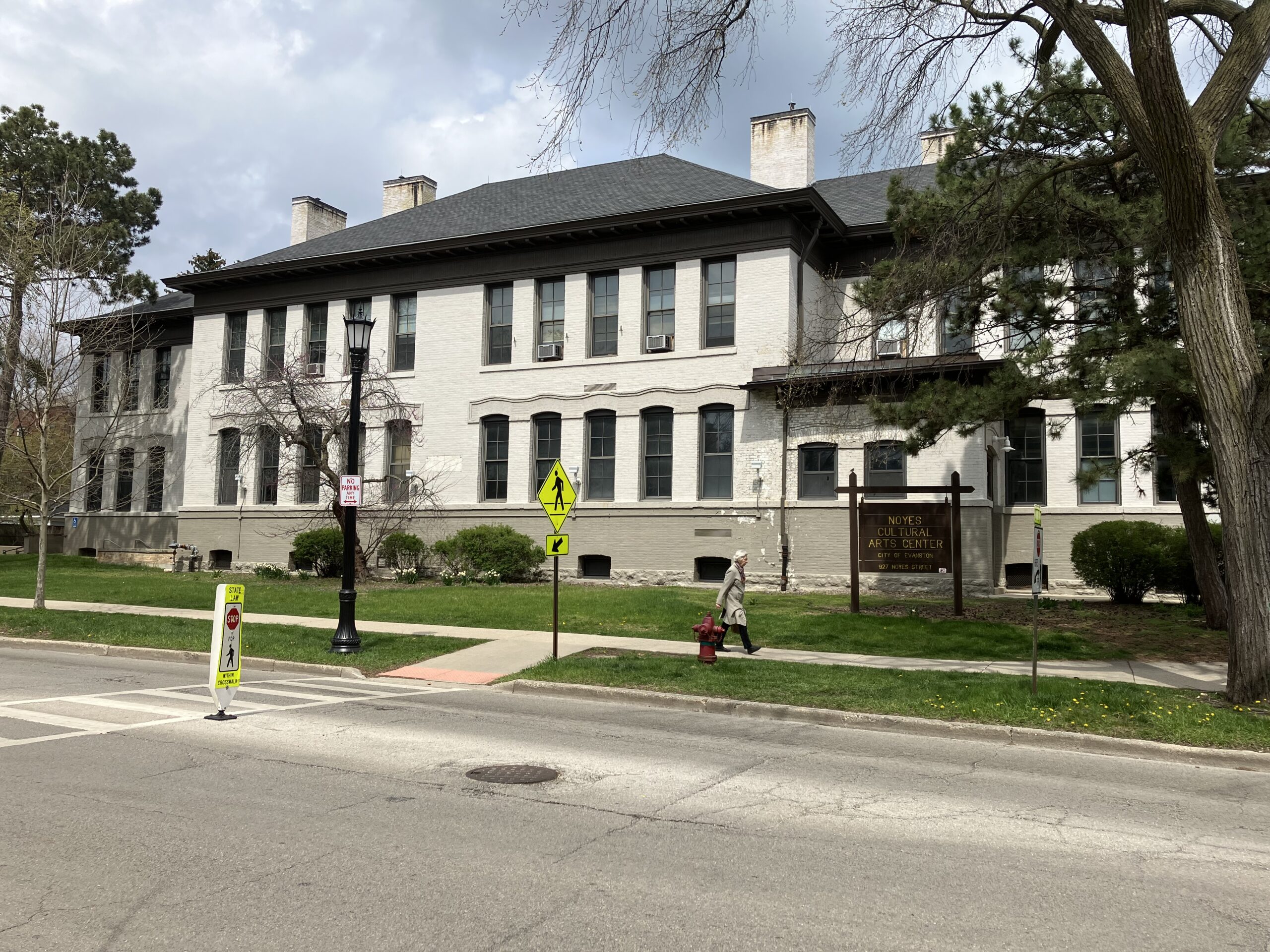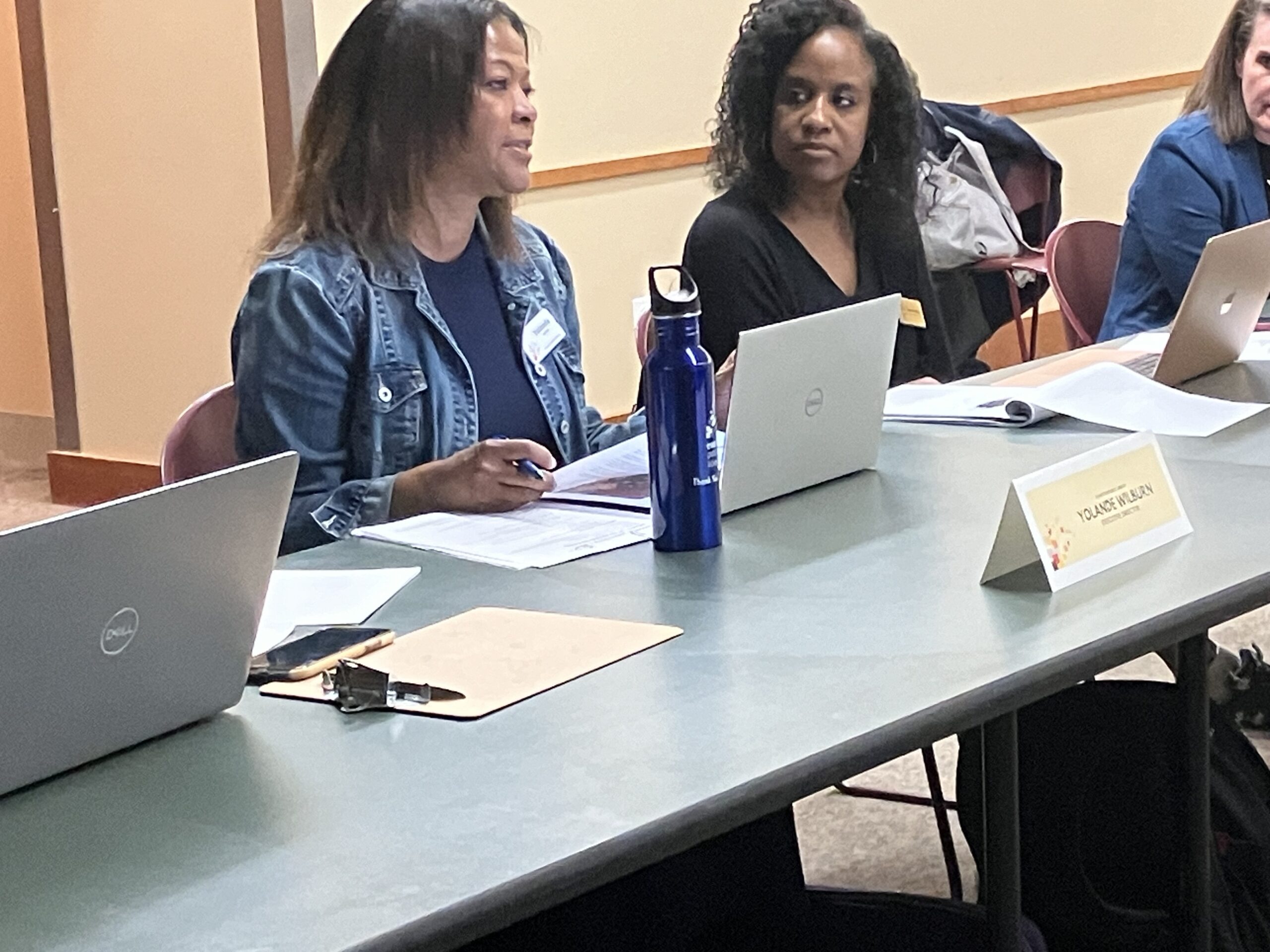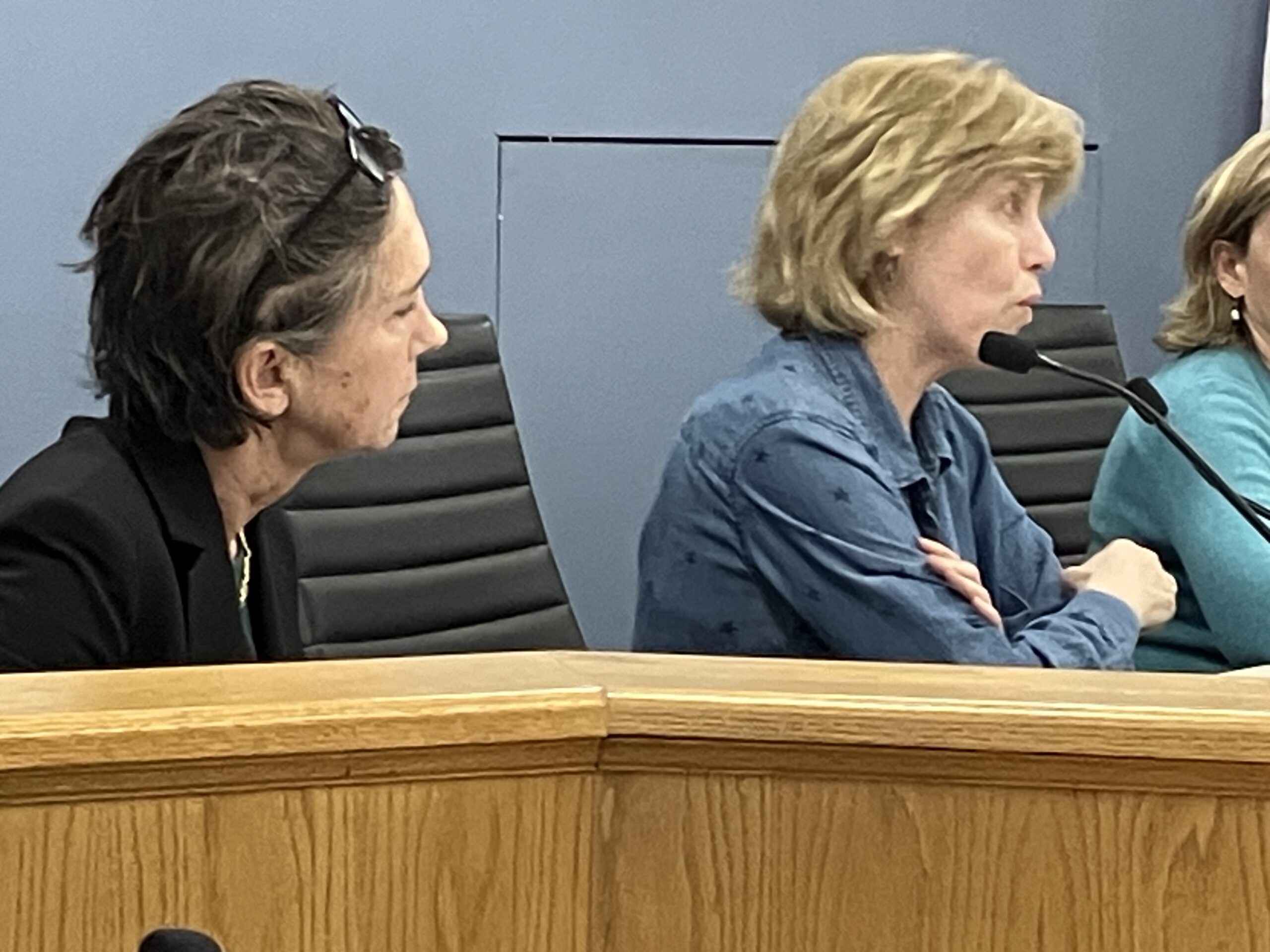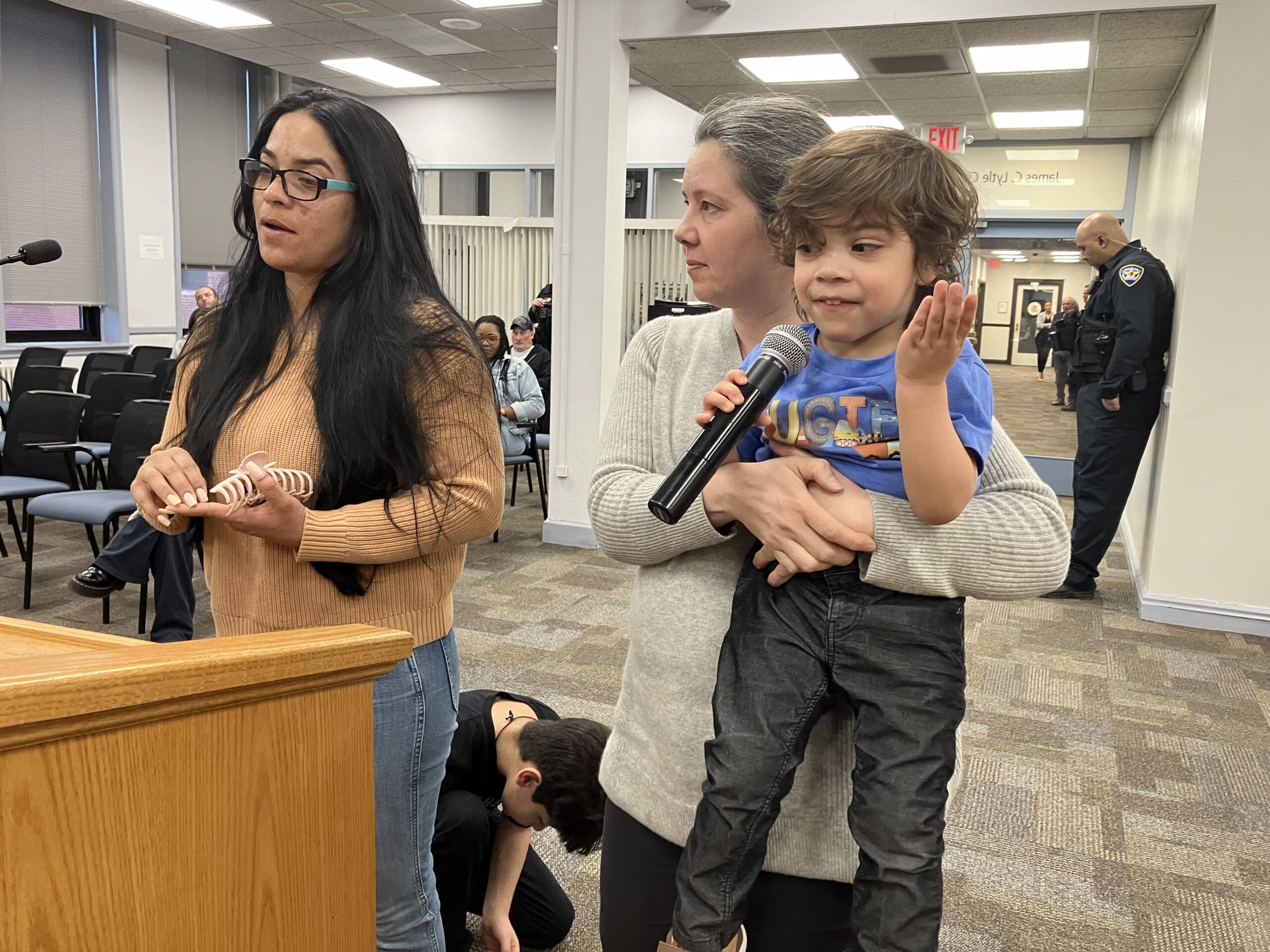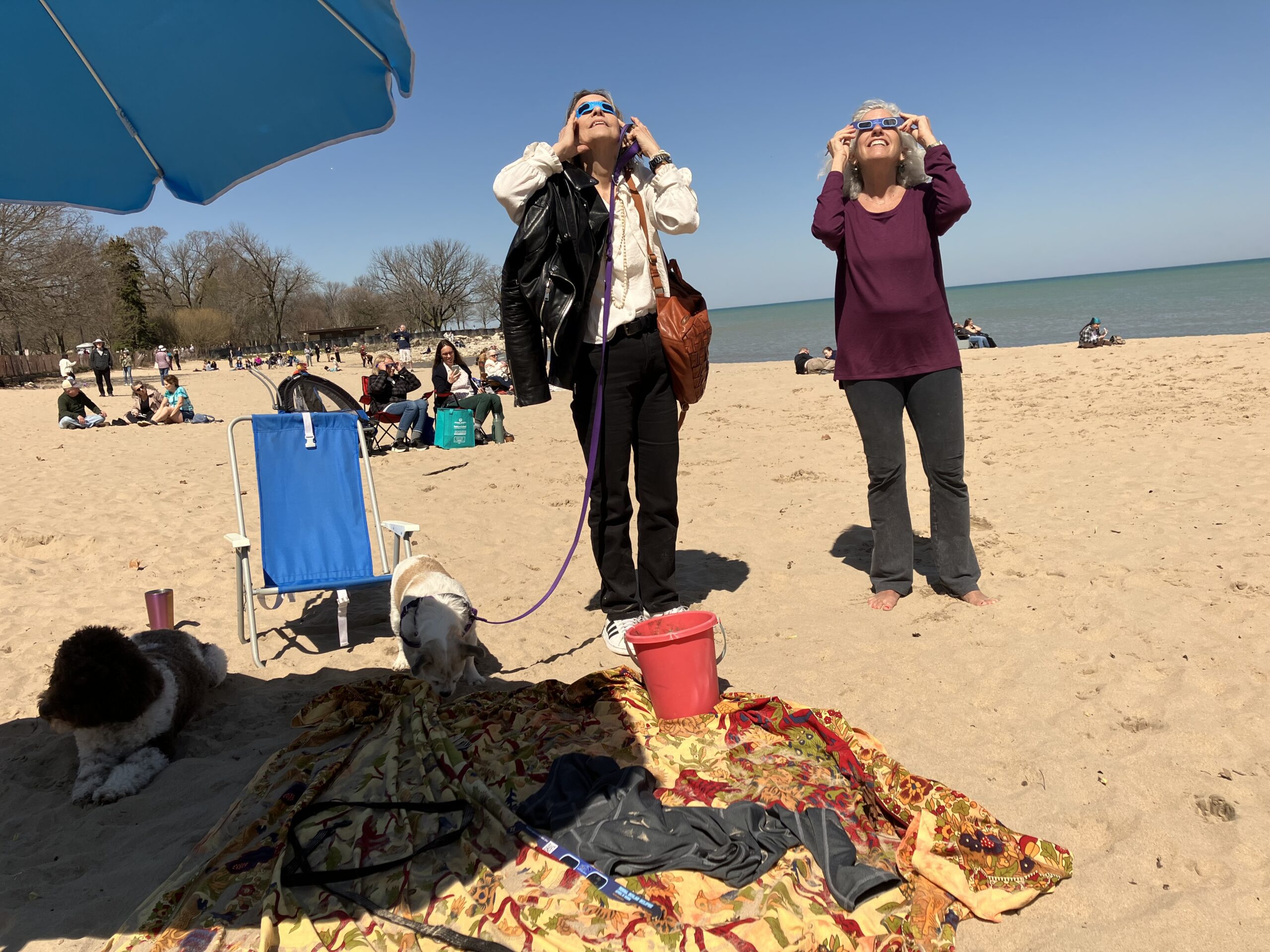$22 million cost estimate spurs discussion
By Bob Seidenberg
Some Evanston Preservation Commission members raised concerns at a recent meeting that a feasibility study recommending a $22 million renovation of the more than 130-year-old Noyes Cultural Arts Center is a repeat of a pattern that has placed other city buildings of historical significance – namely, the Morton Civic Center and the Harley Clarke mansion – in jeopardy.
“It’s almost like they [city officials] have a hit list of historic buildings that they want to do something with,” said Commissioner Charles Smith during the group’s discussion of the project at their April 9 meeting.
“I mean why take all these $20 million, $30 million projects and bring them all up, hire consultants and bring them to the table at one time?” he asked.
The meeting was the first for the commission members to weigh in on the feasibility study. Since the Noyes building, formerly a city public school, is a designated local landmark, any exterior alterations or new construction visible to the public are subject to the commission’s binding design review under city code, the commission pointed out in a letter.
On March 28, 2022, Evanston City Council members approved staff’s recommendation to hire a consultant to conduct the study – primarily of upgrading the Noyes Cultural Center’s heating and air-conditioning system at a cost of $185,000.
Legacy facilities needing repairs
As the city began to emerge from the height of the pandemic, Noyes – where a number of local artists rent studios and where performances by the Fleetwood-Jourdain Theatre and the Piven Theatre Workshop are held – was one of a number of “legacy facilities” city staff identified as being in need of major repairs. The city’s service center, the Morton Civic Center, the police/fire headquarters and the Ecology Center were also on the list, with staff estimating a combined repair for those buildings ranging from $145 million to $375 million.
In the case of the Morton Civic Center, also a local landmark, city officials have already voted to move out of the building into downtown space, leaving in question the future of the longtime city hall.
Although the $185,000 feasibility study for Noyes initially focused on renovating the building’s heating and air condition system, it expanded beyond that, consultant Salas O’Brien said in the introduction to the report. The expansion was intended to develop a roadmap for moving the facility to carbon neutrality by 2035.
The study recommended replacing or upgrading many of the building’s systems, such as mechanical, electrical, plumbing, fire protection and technology. The recommendations also included tapping solar power for some of the building’s electricity and running a geothermal system under nearby Talmadge Park to cool and heat the building.
In a discussion at the finance and budget committee meeting held a few hours before the preservation board meeting, some committee members questioned whether spending $22 million on Noyes made sense.
City needs to be ‘really careful’ regarding renovations
With the city declaring major repair costs for the Morton Civic Center, the police and fire headquarters, and now the Noyes Center “all at the same time,” observed City Council Member Jonathan Nieuwsma (4th Ward), “I think we need to be really careful about how we’re spending our money and what we’re committing to.”
David Livingston, a finance and budget committee member, questioned whether the city was better off running the programs now at Noyes in some other facility “that would be far less expensive.”
After the meeting, City Council member Clare Kelly (1st Ward), another member of the Finance and Budget Committee, and Mary Rosinski, an activist and longtime real estate agent, walked down the hall to the preservation commission, where they urged the commission’s support for protecting the building.
All of a sudden, it is falling down’
Kelly told the group that her “deep, deep” concern was that this building – “that means so much to our community, so much to our business district and also is right next to the L – that money hasn’t been invested. We haven’t been proceeding forward with upgrades.”
Addressing some of the recommendations in the feasibility report, she noted that “the solar industry is changing all the time, so to commit to that wouldn’t really make any sense.” And while there is federal funding for geothermal heating, she said, there have been concerns about the effect of an underground system on the trees in Talmadge Park.
In discussion, commission members brought their own concerns, which will be incorporated into a comment letter that City Planner Cade Sterling helped draft and will be given to city Public Works Agency officials spearheading the project. Sterling is the city staff liaison to the commission.
“One thing we can’t say is that preservation has to happen or it’s not preservation,” said Thomas Ahleman, a commission member and architect, setting out parameters for the discussion. “We can’t let the perfect be enemy of the possible.”
Commission member and Vice Chair Beth Bodan supported that view, also expressing the need for city officials to be more transparent in general in their plans for historic structures.
“If the public knows that these projects are earmarked for $20 million, you know, like five years ago, $22 [million] might not sound as crazy because maybe they were close to their earmark. I don’t know – I just want to see the capital plan and I honestly don’t know if it exists or, especially for these historic buildings that they [the city] are stewards of.”
Commissioner Smith, who has for years led a volunteer force preserving the grounds around the city’s Harley Clarke mansion, another historic structure, called Noyes “a lovely building” – and one that he had worked on as recently as three years ago.
“But I read this plan and it seemed to be similar to the other plans – that all of a sudden, it is falling down,” he said to commission members.
‘Try harder’ to preserve historic buildings, Smith says
“I’m a landscaper, and I see these buildings as beautiful works of art,” he said. “I see them as what Evanston represents to me and to see them altered in a way that they are no longer beautiful buildings. … I’m sorry … I don’t understand why all of a sudden there’s so many of these buildings [in danger].”
Smith noted, “We have a lot of intelligent people who work in the city and I think it’s important to tell them to, you know, try harder.
“I mean net zero is one thing,” he said. “From my perspective, in this body, I think that the quality of restoring and preserving the character of a historic building is as important in my mind as net zero.”
Several members spoke about the city’s history of not maintaining buildings. Commission member Carl Klein suggested there should be an annual line in the city budget for facility maintenance.
The group’s draft letter that will be sent to the city’s Public Works Agency “welcomes this substantial investment in one of the city’s most significant institutional resources – signifying a commitment to this resource and assuring its ability to continue serving the public for generations to come.”
Building’s historical importance
The letter also stresses the historical importance of the building.
“The Noyes Cultural Arts Center, formerly known as the Noyes School, designed in 1892 by D.H. Burnham and Company, with later additions by Larry Perkins and Philip Will [Perkins and Will], is one of the city’s premier publicly held resources with deep historic, architectural, social, and cultural associations and significance,” the letter noted.
“The entire lot of record, including the surface parking lot and park, is a designated local landmark (1982). Additionally, the property has been determined eligible for the National Register of Historic Places by the Illinois state historic preservation officer.”
The letter offered a number of suggestions related to the scope of work proposed by the consultant, in a number of cases encouraging the city to review the commission policies already in place concerning window replacements and rooftop solar installations.
Regarding geothermal installation, it recommended “a method that minimizes land-altering activity and associated impacts to the sites integrity of setting and mature vegetation and shade trees.”
Further, the commission recommended close consultation with the State Historic Preservation Office and representatives from the historic preservation offices of the native peoples whose ancestral homeland included Evanston – a subject the commission recently devoted part of a meeting to – in order to agree on a construction method and on-site monitoring approach that “ensures potential archaeological resources are treated with the sensitivity and respect they deserve.”
